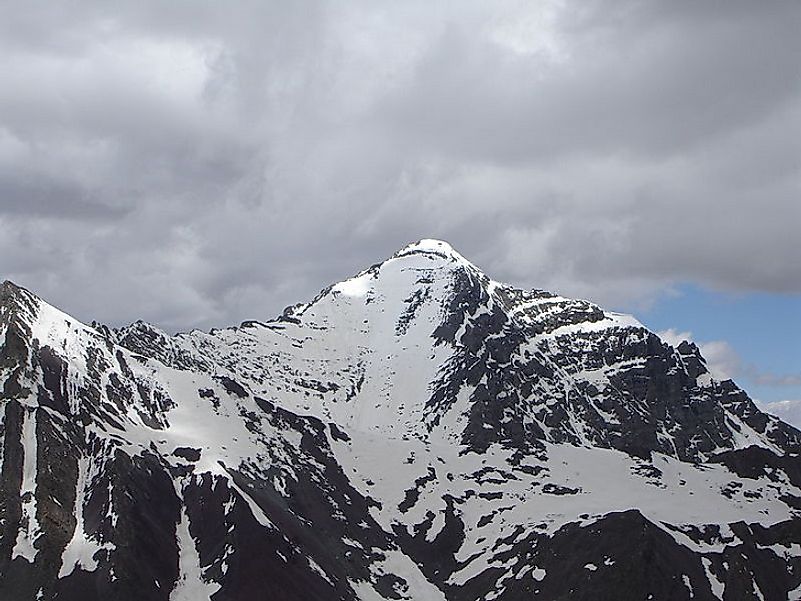The Biggest National Parks In India

India is the second most populated country in the world, covering 1,269,219 square miles that jut out into the Indian Ocean, Arabian Sea, and Bay of Bengal. The nation is covered in mountains, coastlines, deserts, and riverways, and encompasses climates ranging from tropical to montane. It is one of the 17 megadiverse countries and contains 3 biodiverse hots pots. Approximately 21% of the land area is covered in forests and the country is home to 8.6% of the global mammal population, 13.7% of all birds, 7.9% of all reptiles, and 6% of all amphibians. In addition, 33% of its plants are endemic to the zone. India has been at the front lines of tiger conservation efforts and has increased its national parks over the years. This article takes a look at the biggest national parks in the country.
Hemis National Park Tops The List
The biggest national park in India is the Hemis National Park, located in Jammu and Kashmir states. It stretches over nearly 1,700 square miles north of the Himalayas and is covered in dense pine forests, alpine shrubs, and meadow lands. A 400-year old Buddhist monastery falls within its boundaries. The climate is extremely cold and can reach -4 Degrees Fahrenheit. The park is home to the Himalayan Griffon vulture, Tibetan snow finch, snow leopard, Tibetan wolf, and the snow fox.
Desert National Park
Following in second place is the Desert National Park, 1,220 square miles of protected area in the state of Rajasthan. This park is located in a unique habitat in north western India, the Thar Desert. The climate here is hot and dry, the landscape sandy, rocky, and partially covered in sand dunes. Home to several endemic species of plants and animals, including the Sindh Owl-headed snake, this desert is on the tentative list to become a UNESCO World Heritage Site. The endangered Indian Bustard bird inhabits the area along with the desert fox, desert cat, and monitor lizard. Sixty mammal species, 8 amphibian species, and 51 reptile species can be found here.
Gangotri National Park
The third largest national park is the Gangotri National Park. This 922-square mile park is located within Uttarakhand and is covered with coniferous forests and glacier capped mountains. Typical plants here include fir, spruce, and oak trees. At higher elevations, alpine shrubs begin to take over the landscape. Recorded species include 150 birds and 15 mammals, such as the snow leopard, black bear, musk deer, and Himalayan snowcock.
Namdapha National Park
Number 4 on the list is the Namdapha National Park which lies within Arunachal Pradesh and extends over 766 square miles. This park is inside of the Eastern Himalayan biodiversity hot spot and as such is home to an immense array of flora and fauna. Various kinds of leopards, civets, macaques, and otters make their home here as well as tigers, wild boar, and sambar deer. Lowland evergreen rainforests, tropical rainforests, montane forests, bamboo forests, and alpine meadows cover the area.
Other Large massive Parks in India
Other extensive national parks within the country are: Khangchendzonga National Park in Sikkim (688.8 square miles), Guru Ghasidas National Park in Chhattisgarh (556.25 square miles), Gir Forest National Park in Gujarat (545.17 square miles), Sundarbans National Park in West Bengal (513.55 square miles), Jim Corbett National Park in Uttarakhand (509.07 square miles), and Indravati National Park in Chhattisgarh (485.87 square miles).
Tourism in India's National Park System
India is a popular tourist destination with many people eager to visit the famous Taj Mahal, as well as the various festivals, palaces, and temples. No trip would be complete however, without including visits to the national parks in order to have the chance to see some of the world’s most endangered wildlife. Some of the parks listed receive as many as 70,000 visitors in one season! Recently, the government of India has revised its visa policy and they are now available at 16 assigned airports around the world making it even easier to visit the country. Since this change, the country has seen tourist growth of over 1,000% over the last few years.
The Biggest National Parks In India
| Rank | Name | State | Area (in km2) |
|---|---|---|---|
| 1 | Hemis National Park | Jammu and Kashmir | 4,400.0 |
| 2 | Desert National Park | Rajasthan | 3,162.0 |
| 3 | Gangotri National Park | Uttarakhand | 2,390.0 |
| 4 | Namdapha National Park | Arunachal Pradesh | 1,985.2 |
| 5 | Khangchendzonga National Park | Sikkim | 1,784.0 |
| 6 | Guru Ghasidas (Sanjay) National Park | Chhattisgarh | 1,440.7 |
| 7 | Gir Forest National Park | Gujarat | 1,412.0 |
| 8 | Sundarbans National Park | West Bengal | 1,330.1 |
| 9 | Jim Corbett National Park | Uttarakhand | 1,318.5 |
| 10 | Indravati National Park | Chhattisgarh | 1,258.4 |











